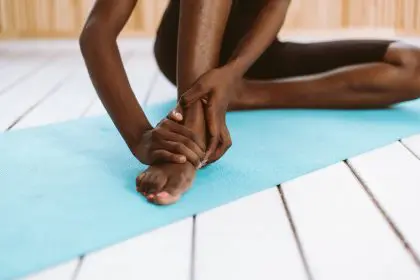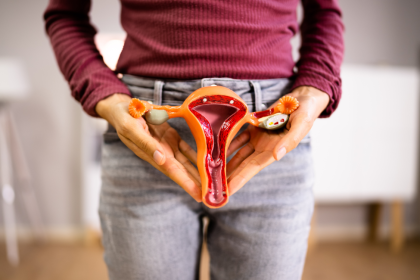Philadelphia, a city pulsing with history and resilience, has long championed the well-being of its residents. From community fitness programs to mental health initiatives, the City of Brotherly Love strives to foster a culture of health. Yet, recent hurdles have cast a shadow over these efforts, threatening to unravel progress. Four distinct challenges—economic strain, healthcare access gaps, social disconnection, and environmental barriers—have emerged as formidable obstacles, reshaping how Philadelphians pursue wellness. Below, we explore these issues and their impact on the city’s health landscape, numbering each for clarity.
1. Economic strain tightens budgets
Philadelphia’s diverse neighborhoods, from Fishtown to Point Breeze, thrive on the energy of working-class families and small businesses. However, rising costs have squeezed household budgets, making wellness a luxury for many. Inflation, coupled with stagnant wages in some sectors, forces residents to prioritize rent and groceries over gym memberships or therapy sessions.
For example, community centers offering free yoga or nutrition classes see fewer participants as people work longer hours to make ends meet. Healthy eating, a cornerstone of wellness, becomes harder when fresh produce costs more than processed alternatives. Corner stores, often the only option in food deserts like parts of North Philly, stock shelves with chips and soda, not kale or quinoa. This economic pinch doesn’t just limit choices—it breeds stress, which chips away at mental health.
Local nonprofits try to bridge the gap, distributing free meal kits or hosting financial literacy workshops. Yet, these efforts struggle to keep pace with demand. The ripple effect is clear: when money is tight, wellness goals slip out of reach, leaving residents caught in a cycle of survival over self-care.
2. Healthcare access gaps widen
Access to quality healthcare forms the backbone of any wellness plan, but Philadelphia faces persistent gaps that hinder progress. While the city boasts world-class hospitals, many residents, especially in underserved areas like West Philly or Kensington, struggle to navigate the system.
Primary care clinics often have long wait times, and specialists can be even harder to reach without private insurance. For low-income families, Medicaid helps, but not all providers accept it, limiting options. Mental health services, critical for holistic wellness, are particularly scarce. The demand for counselors and therapists far outstrips supply, leaving waitlists stretching months.
Telehealth, once hailed as a solution, falters for those without reliable internet or devices. Community health fairs aim to fill the void, offering free screenings for blood pressure or diabetes, but they’re sporadic and can’t replace consistent care. These barriers mean preventable conditions often go unchecked, derailing wellness before it starts. The city’s push for mobile clinics shows promise, but scaling up remains a challenge in the face of funding shortages.
3. Social disconnection frays community ties
Wellness thrives in connected communities, where neighbors support each other through shared goals, like group runs or parenting classes. In Philadelphia, however, social bonds have frayed in some pockets, driven by a mix of urban sprawl and post-pandemic shifts. Neighborhoods like Germantown or South Philly still host vibrant block parties, but turnout has dipped as trust wanes.
The rise of remote work, while convenient, keeps people indoors, reducing chance encounters that once sparked friendships. Community centers, vital for seniors and youth, face staffing shortages, cutting back on programs like dance classes or mentorship groups. For young adults, social media offers a hollow substitute for real-world connection, often fueling loneliness instead of easing it.
This isolation hits mental wellness hard. Feelings of belonging, proven to boost mood and resilience, are harder to come by when neighbors feel like strangers. Grassroots efforts, like pop-up fitness events in Fairmount Park, aim to rebuild ties, but they’re not enough to counter broader trends. Without strong social networks, wellness plans lose their spark, leaving residents to navigate health goals alone.
4. Environmental barriers block active living
Philadelphia’s green spaces, from the Schuylkill River Trail to FDR Park, are jewels for active lifestyles. Yet, environmental challenges in certain areas make it tough to stay healthy. Aging infrastructure, like cracked sidewalks in Olney or poorly lit streets in Nicetown, discourages walking or biking. Safety concerns amplify the issue—parents hesitate to let kids play outside when vacant lots attract trouble.
Air quality, another hurdle, worsens in industrial zones near the Delaware River. Asthma rates climb, sidelining exercise for those with respiratory issues. Even community gardens, a beacon for wellness, struggle against soil contamination in older neighborhoods. These barriers don’t just limit physical activity—they dampen morale, making wellness feel like an uphill battle.
City programs, like bike lane expansions and park cleanups, aim to improve access, but progress is uneven. Volunteers rally to plant trees or clear debris, but funding for large-scale fixes lags. Until these environmental woes ease, residents face daily obstacles to staying active and engaged.
Roots of the challenges
These four slumps don’t exist in a vacuum—they feed off each other, creating a tangled web. Economic strain, for instance, exacerbates healthcare gaps, as families skip doctor visits to save money. Social disconnection deepens when environmental barriers, like unsafe parks, keep neighbors apart. Systemic issues, like inequitable resource distribution, play a role too. Wealthier areas, like Center City, enjoy better access to gyms and clinics, while poorer districts scrape by with less.
Historical patterns also linger. Redlining left some neighborhoods with fewer green spaces or health facilities, and those disparities persist. Meanwhile, recent budget cuts have strained public services, from libraries to rec centers, which often double as wellness hubs. These factors intertwine, making solutions complex but urgent.
Signs of resilience
Despite the gloom, Philadelphia’s spirit shines through. Community groups refuse to let wellness fade. In West Philly, fitness collectives host free Zumba classes in church basements. Food co-ops in Kensington deliver affordable produce to seniors, bypassing grocery gaps. Online forums, like neighborhood Facebook groups, spark virtual support networks, helping residents share tips on free yoga or therapy resources.
City-led efforts show grit too. Health fairs rotate through underserved areas, offering screenings and nutrition advice. Pop-up bike repair shops encourage cycling, even in tougher neighborhoods. These initiatives, though stretched thin, reflect a belief that small steps can rebuild momentum. Residents, too, adapt—swapping gym workouts for home exercises or forming walking clubs to reclaim streets.
The path forward
Philadelphia’s wellness plans face a rocky road, but the city’s heart keeps beating. Economic relief, like job training programs, could ease financial stress, freeing up resources for health. Expanding mobile clinics and telehealth access might close healthcare gaps, especially for mental wellness. Community events, from potlucks to 5K runs, can rekindle social ties, while infrastructure upgrades—think safer sidewalks and cleaner air—would make active living easier.
The challenges are steep, but so is Philly’s resolve. Each neighborhood, from Roxborough to Passyunk Square, carries a unique spark. By tackling these four slumps head-on, the city can pave the way for a healthier, more connected future. For now, residents and leaders alike dig in, proving that even in tough times, wellness remains a fight worth waging.










